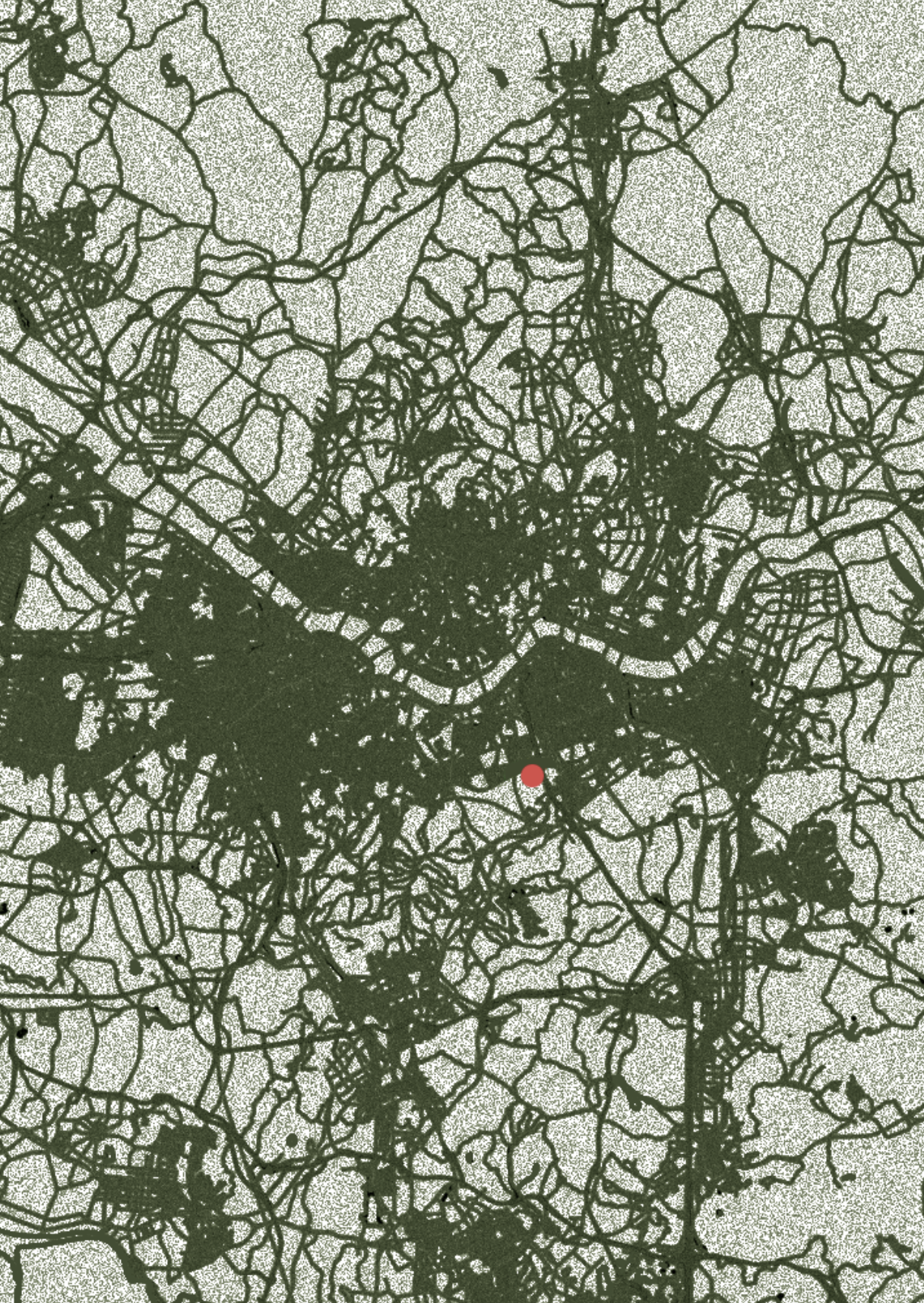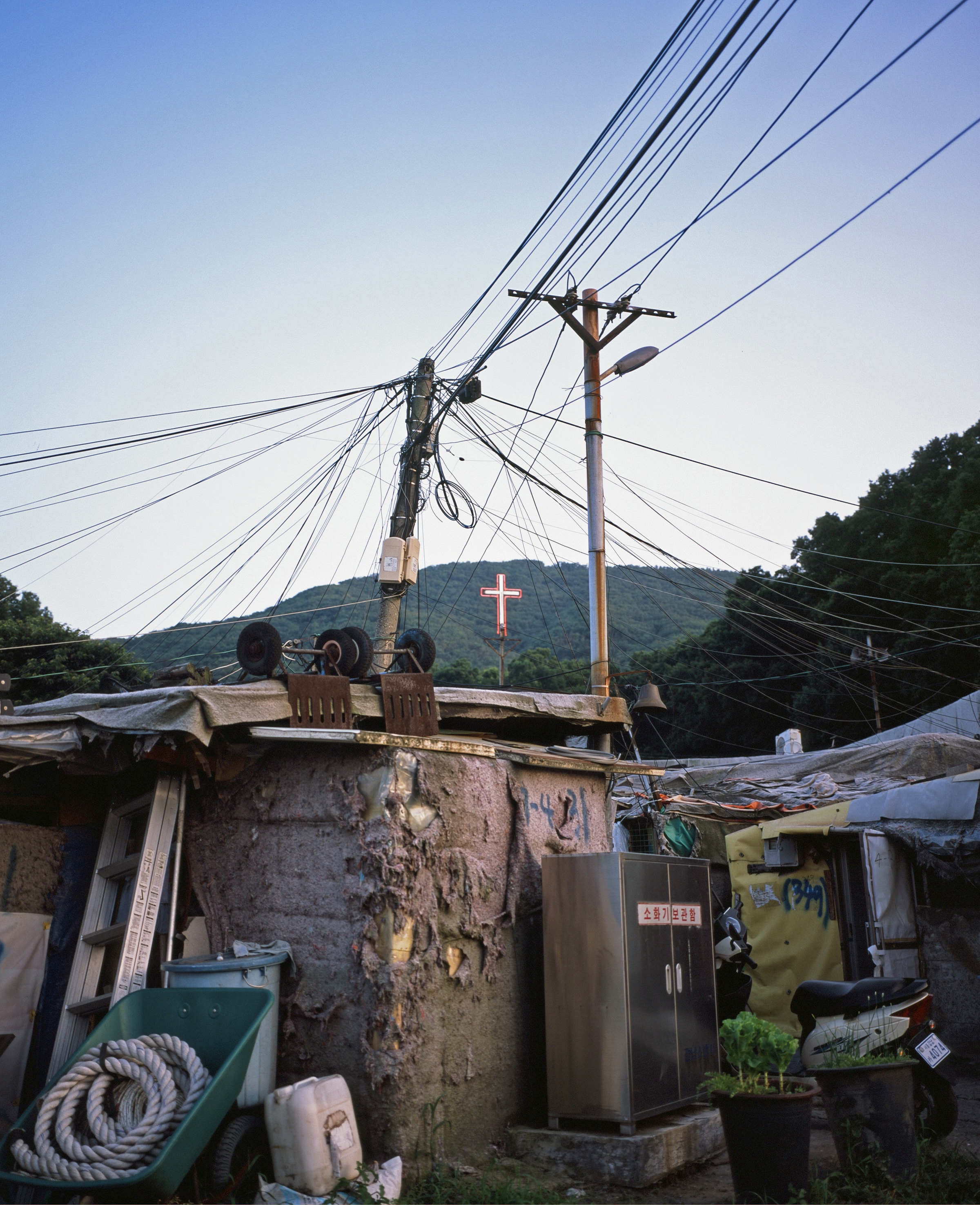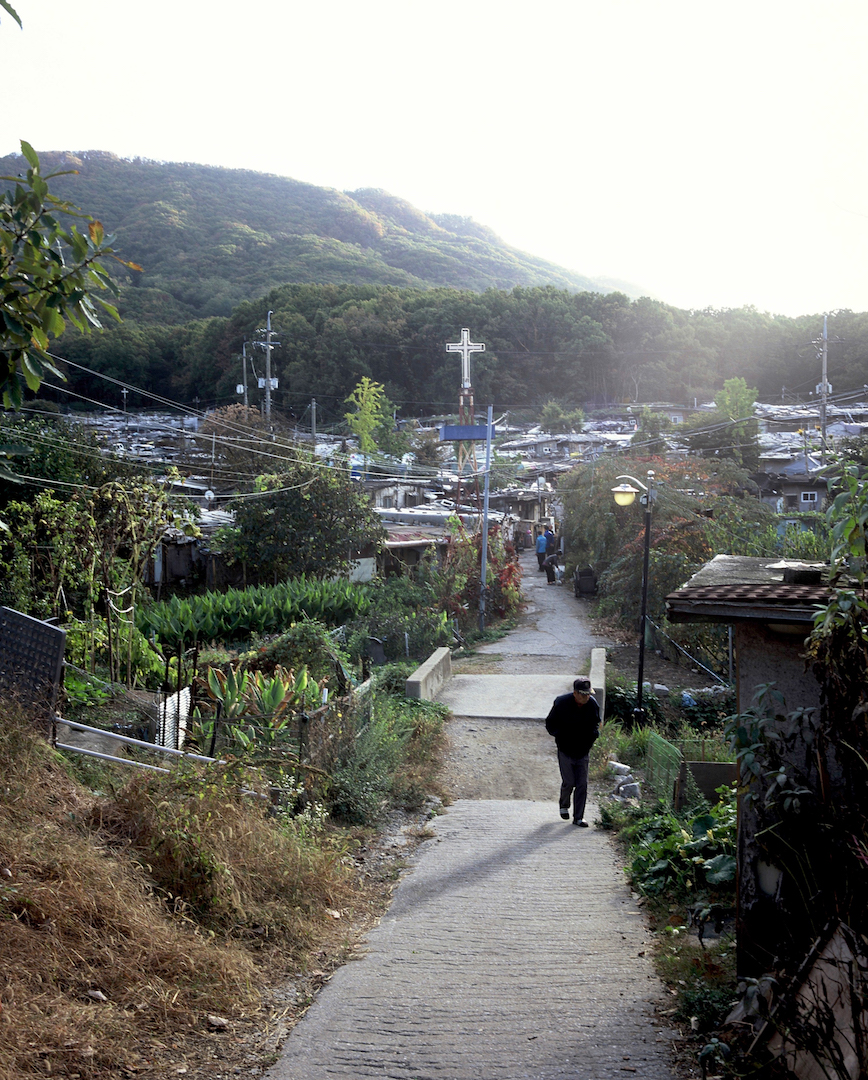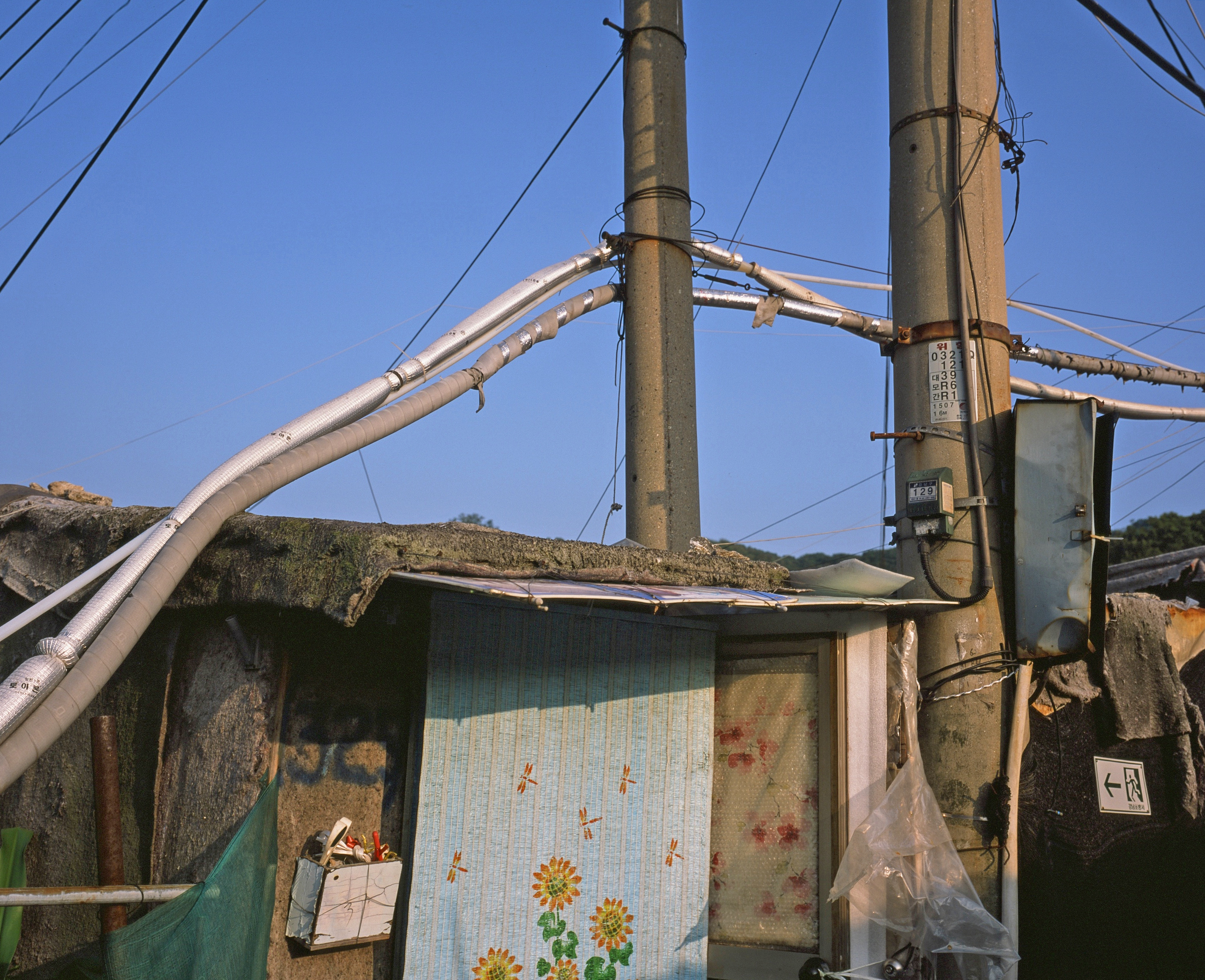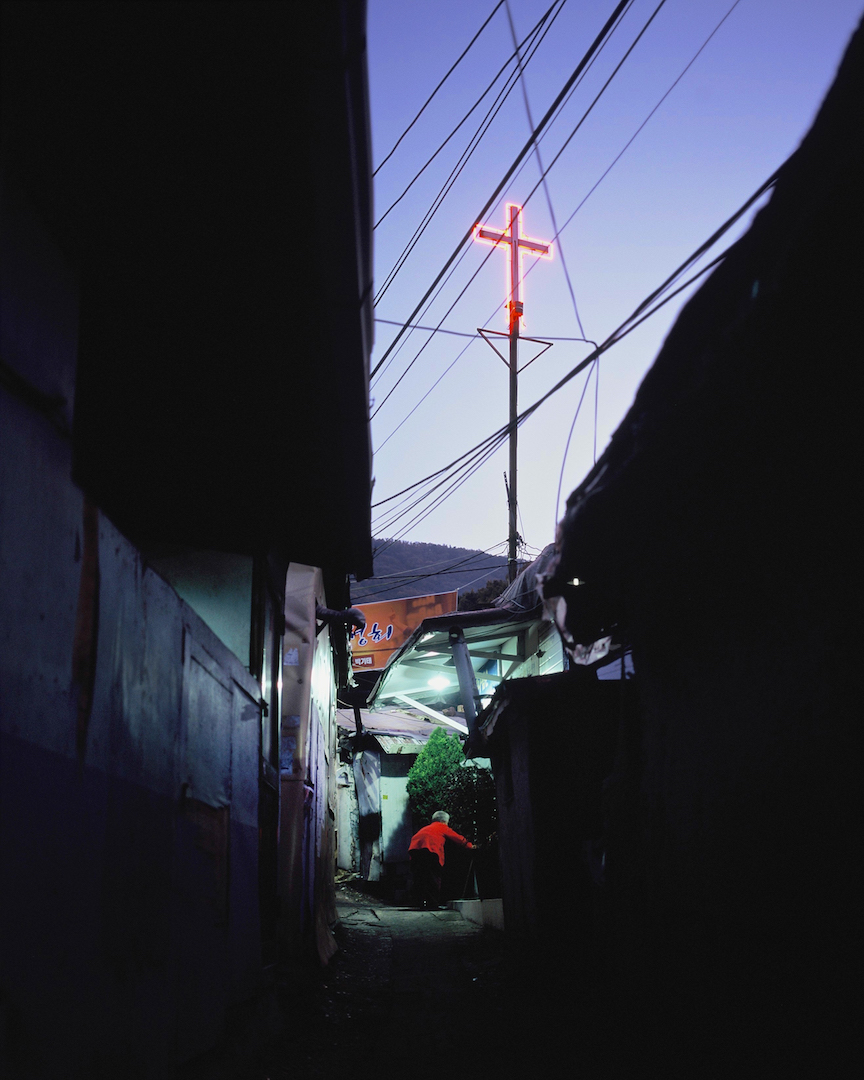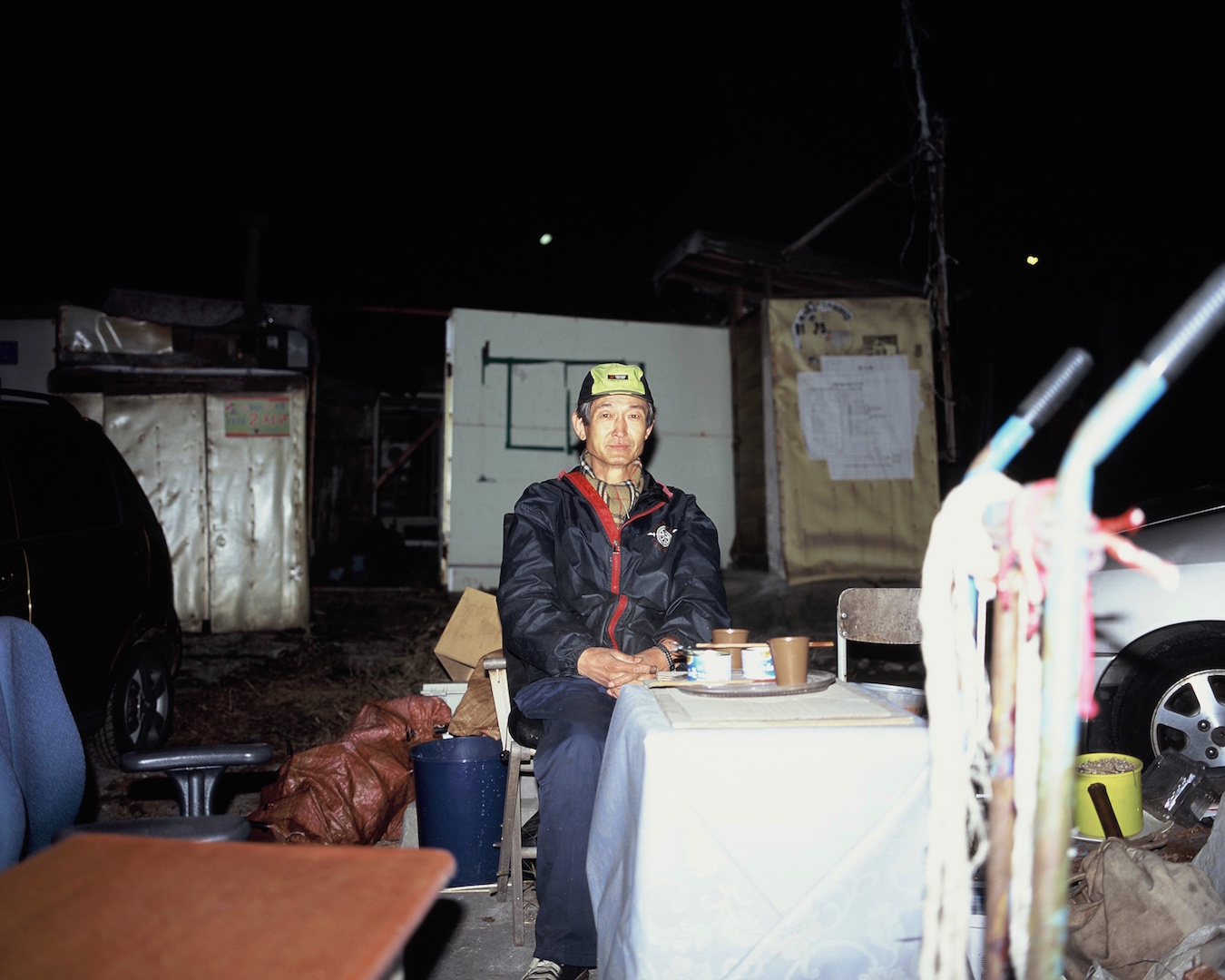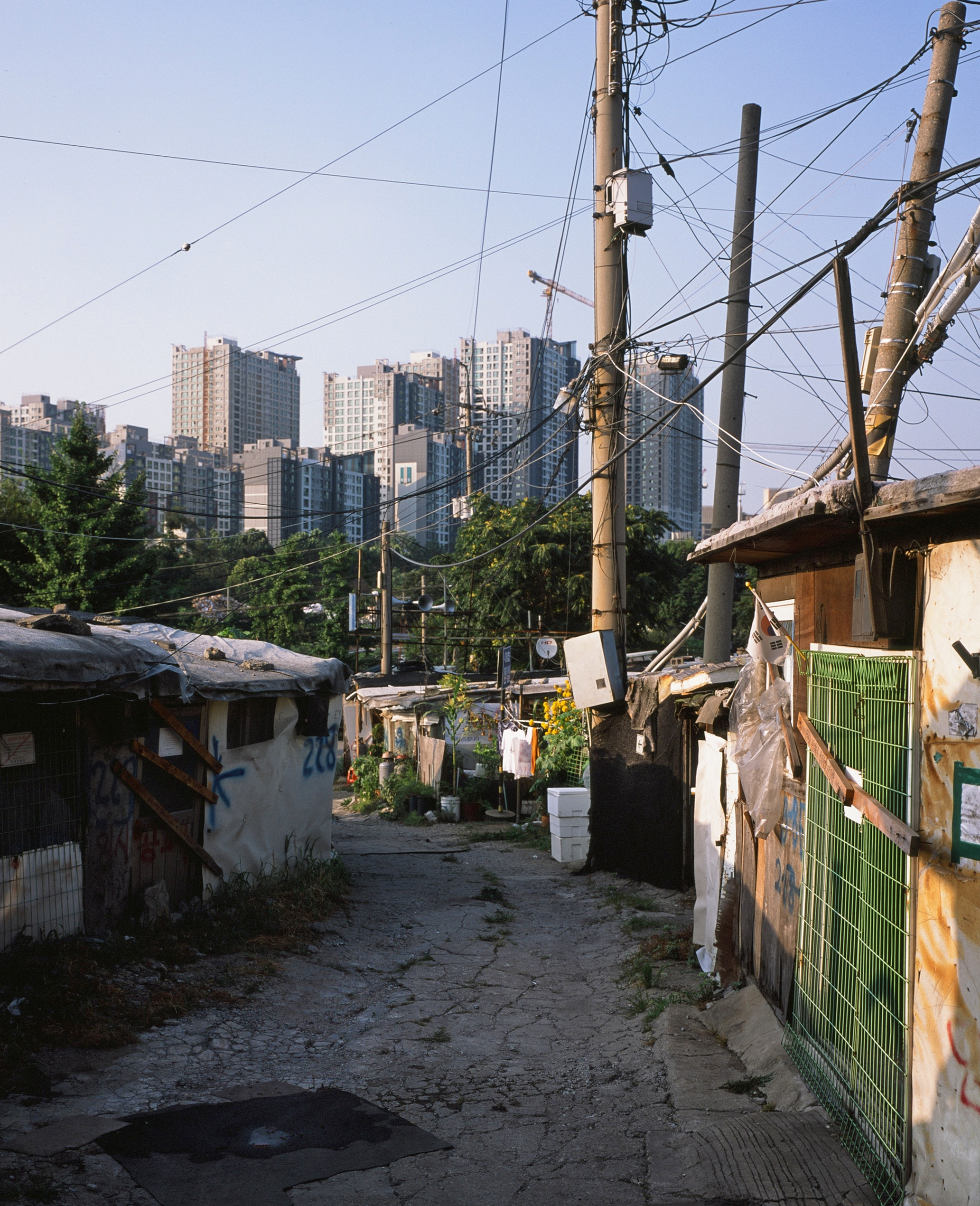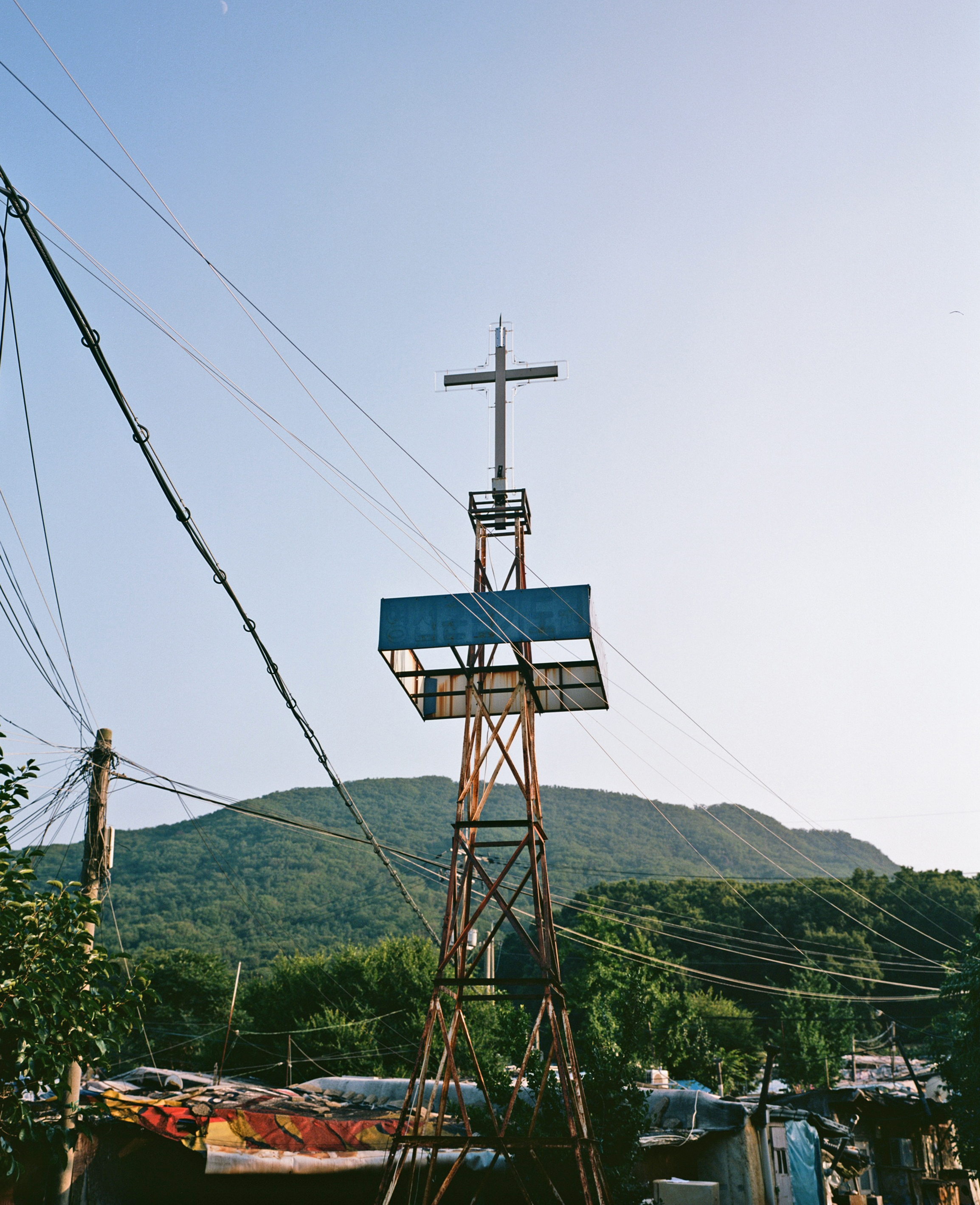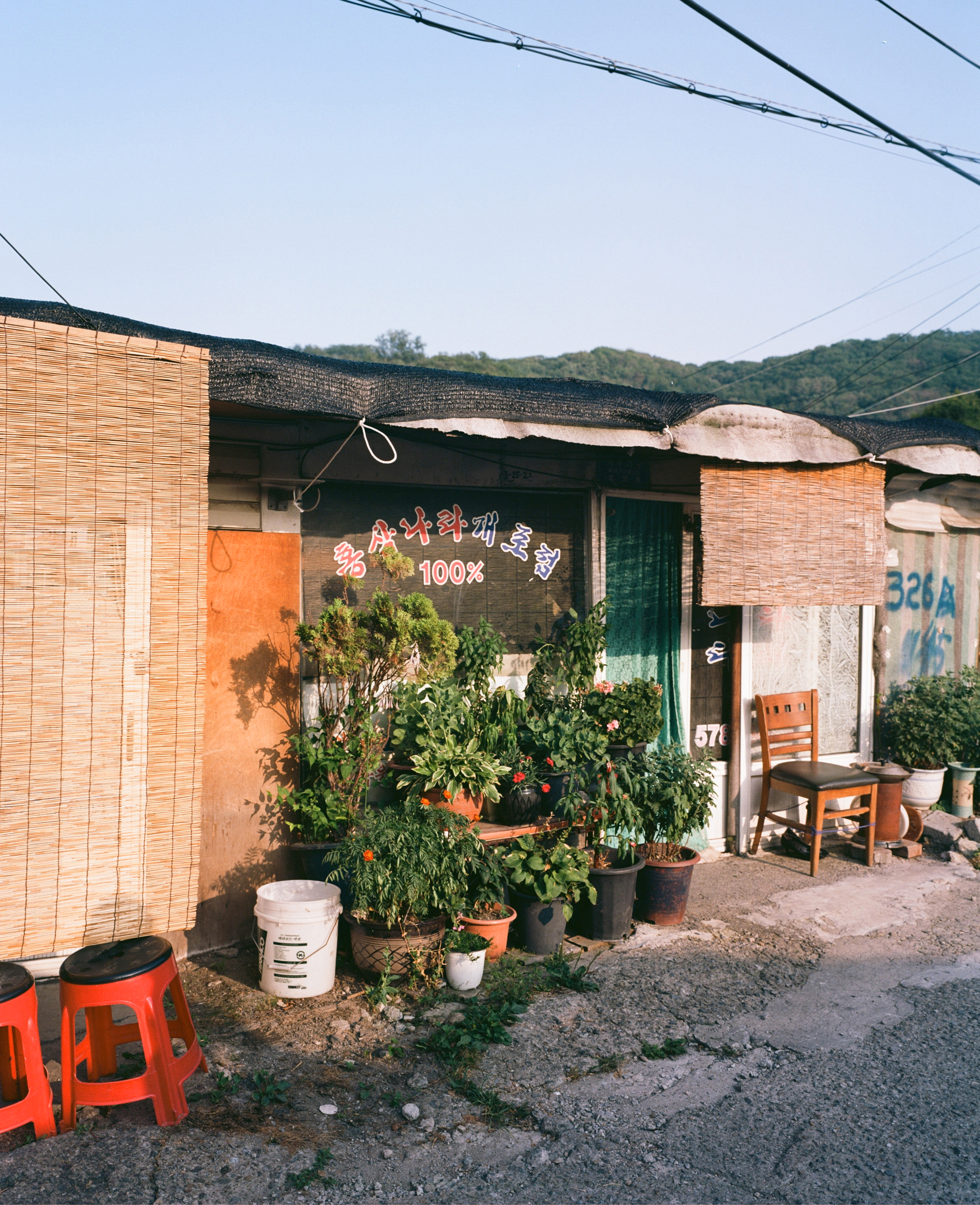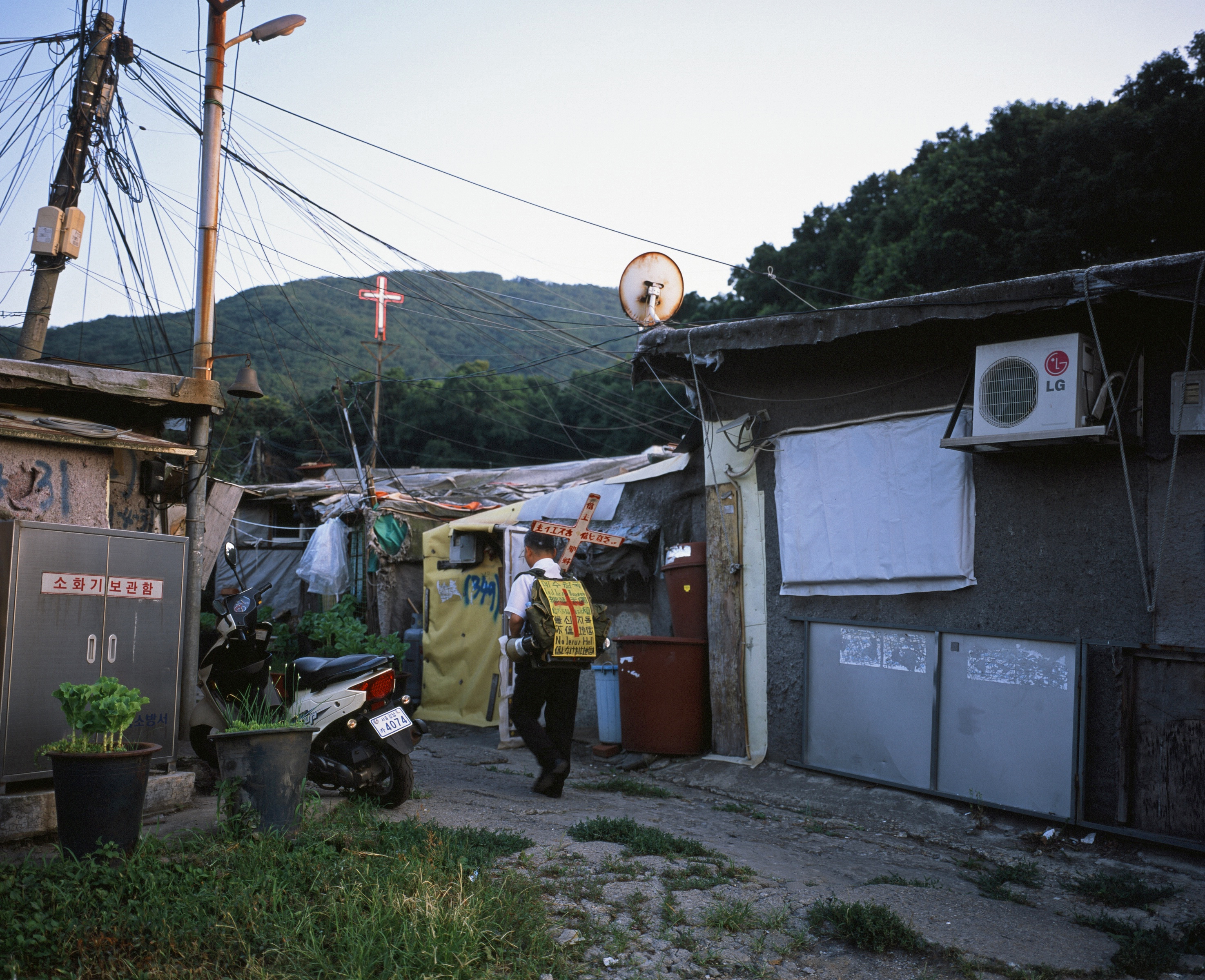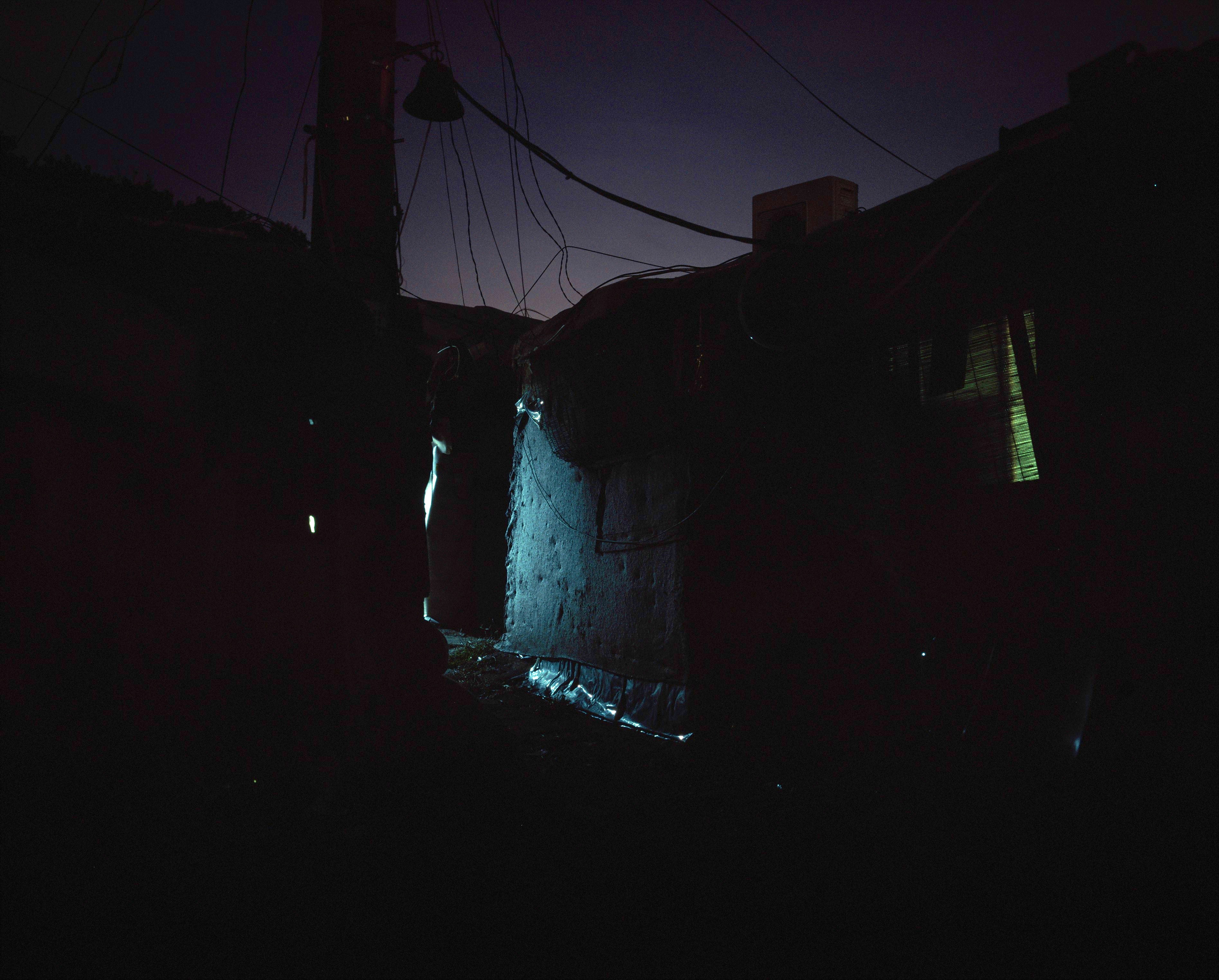The projecting neon crosses of Christian churches in Seoul act as intermittent reminders of Korea’s most popular religion. At the base of each: a place of community worship varying in scale and denomination.
Guryong Village is a private yet illegal makeshift housing community commonly regarded as the last of its kind in the nation. Over time the village grew up the mountain to the south and developed its vantage over Gangnam, Seoul’s most expensive neighbourhood, to the north. Its neon crosses grew with it - visible from highways and places nearby.
In 1988, Seoul hosted the Olympic Games. What occurred prior was a city-wide beautification process where hundreds of poor neighbourhoods were erased in order to make way for new high-rise buildings, parklands and sports infrastructure. As most of these neighbourhoods diminished, Guryong Village grew larger.
Demolition has been imminent for some time but symbolically, and intermittently, the sense of community remains.
Found in Caliper Journal - Issue 09
